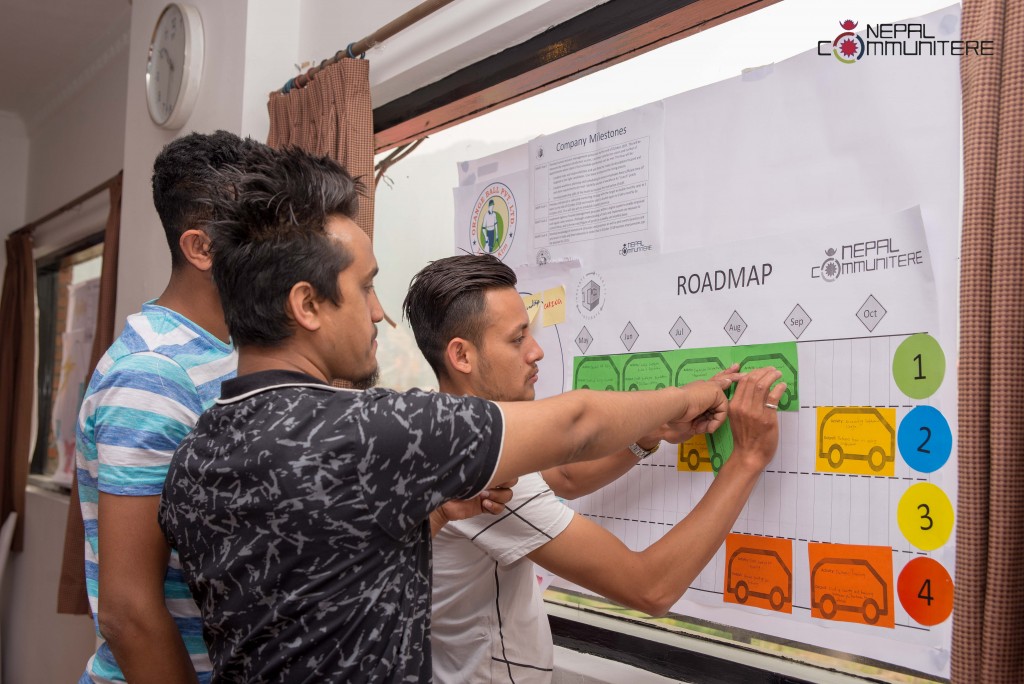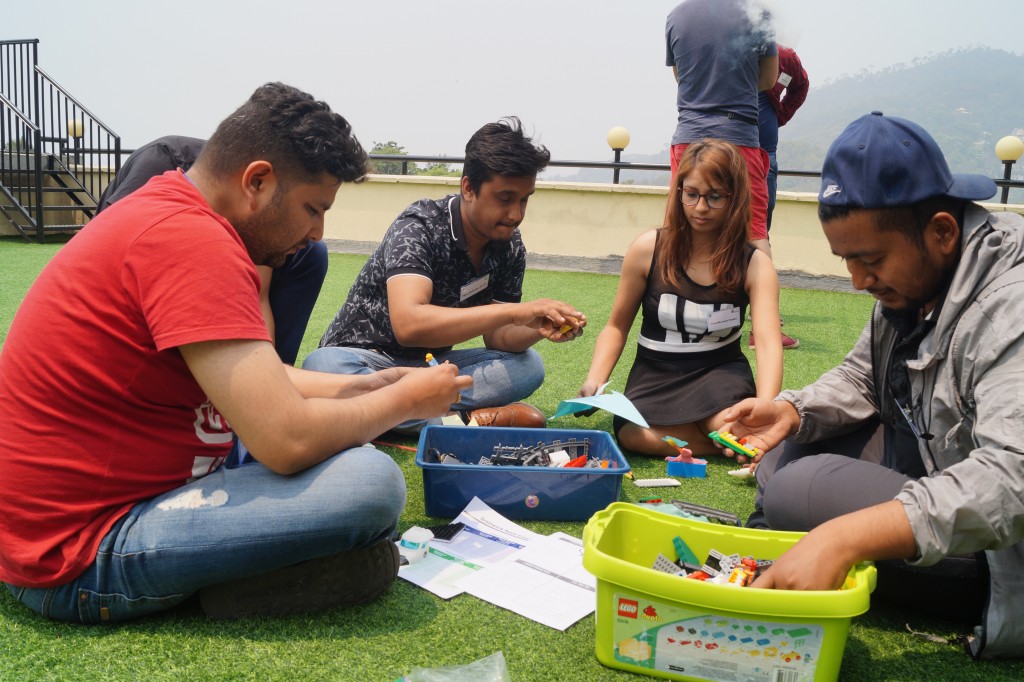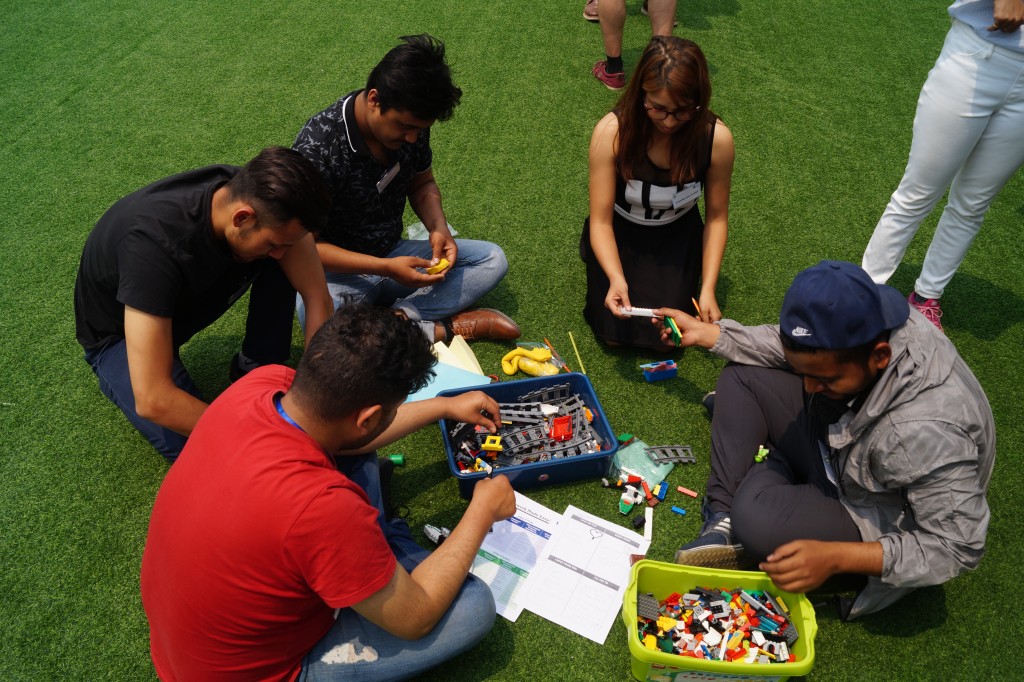Nepal Communitere has strongly believed in the capacity of people to solve challenges and do good through innovation and entrepreneurship. We have also always placed a strong value on communities and the role that people’s voices play for the change that we want to bring in Nepal. The framework we work under and promote at Nepal Communitere for our entrepreneurs is Human-Centered Design.
Nepal Communitere is a place for innovators and entrepreneurs, and our community is constantly coming up with creative plans and ideas that often venture into uncharted territory. Design is a key for the ideation and then execution process. However, we strongly believe that design without being grounded in human experience, where design is just for the sake of the product without keeping in mind what our community actually wants and needs is not good design, and therefore unsustainable.
The design process includes many things. Human-Centered Design is a framework where you include human perspective at every step of the design process: from practicing empathy, ideating, prototyping, testing, iterating and selling. This is an ongoing journey and a wonderful mindset for problem solving. Solutions to problems that people face, can’t be good solutions unless the people that face these problems are engaged in designing the product or service that will serve them. This means asking people what problems they really face, what they need to make their lives easier: taking feedback from people and incorporating it into your design at every point.
Last year, our first cohort of I-Cube entrepreneurs sat down around a table to discuss their year-long experience being incubated. They had finished pitching their companies, and some of them already had seed funds pledged to their name. In conversation, they unanimously agreed that the masterclass they received on Human-Centered Design was what they benefited most from, and the mindset change that it called for. They spoke of how the products and services that they initially started off with took precedence over everything else. However, after the masterclass on Human-Centered Design, the entrepreneurs learned to reach out to their clients and understand their needs and place those needs over what were initially assumed needs. Once the needs of their customer base was realized, their role was to adapt their products to fit those needs.
8Byte Creative Studio, one of our I-Cube Year 1 companies, initially wanted to create an app that would be geared towards high-school and college students. The app’s aim was to bridge the gap between teachers and students and make communication easier. However, through the Human-Centered Design process they realized that the people most in need of this app were pre-school teachers and parents. The studio was faced with a dilemma: either scrap or continue with the plan that they have, knowing that the app they had originally designed would fail. The alternative was to drastically alter the product based on the information that they learned and through the Human-Centered Design process.

The difficulty that most people face during the process is abandoning their one, set idea or product they had worked hard on and had owned, and constantly reiterating and redesigning based on new learnings and feedback. The key learning is to be willing to constantly change your product and value the process of redesigning. Human-Centered Design allows entrepreneurs to do what we at Communitere value most: experiment repeatedly in a place where people can fail safely, only to learn from these failures and incorporate these learnings into the next step of their design process.
At Nepal Communitere, we also provide a platform to support people who believe in the Human-Centered Design process. One of these organizations is Utopia who recently held a two-day design challenge where through Human-Centered Design, participants came up with solutions to urban problems such as migration, information sharing, and mobility. In the two-day challenge, participants said they mostly valued the process where they got to go out and talk to people and get their views and incorporate what they heard and learned into their designs.
In all of these ways, we promote Human-Centered Design, and help build the notion that the process always takes precedence over the product, and that community engagement is key. We provide a platform for Human-Centered Design for other organizations and deeply familiarize our entrepreneurs with the process so that they can be the bold innovators that they are, while still holding Nepal Communitere’s core values: to connect, communicate, collaborate, and meet unmet needs by giving our communities agency in their own development.
“A project that creates something beautiful without any community engagement is less valuable than a project with a lot of community engagement, regardless of outcome.”












